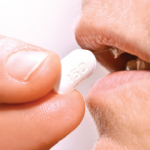Patients with rheumatic diseases may be undertreated for osteoporosis. To decrease fracture risk for at-risk patients, rheumatologists can engage patients in shared decision making with regular screening and education about treatment options…


Patients with rheumatic diseases may be undertreated for osteoporosis. To decrease fracture risk for at-risk patients, rheumatologists can engage patients in shared decision making with regular screening and education about treatment options…

BALTIMORE—Rheumatologists may not think about osteoporosis on a daily basis, but they should, said Dr. Karl Insogna, the Ensign Professor of Medicine at Yale University School of Medicine and director of the Yale Bone Center in New Haven, Conn., in his recent lecture at the Maryland Society for the Rheumatic Diseases. With approximately 75 million…
Anne Harding |
NEW YORK (Reuters Health)—Romosozumab improves bone mineral density (BMD) in men with osteoporosis, but safety concerns are holding up its approval in the U.S. Up to 2 million men in the U.S. have osteoporosis, and up to 13 million have osteopenia, researchers note in a report online June 20 in The Journal of Clinical Endocrinology…

CHICAGO—A 75-year-old woman with low bone density, who has had a fracture and has other risk factors for fracture, is treated with the bisphosphonate alendronate. After five years on the drug she comes back, wondering: Should I stop taking the drug? She’s had no additional fractures. Her bone density has improved, but her lumbar spine…

Diana Girnita, MD, PhD, & Vishnuteja Devalla, MD |
Granulomatosis with polyangiitis (GPA) was first described in the British Medical Journal in 1897 by Scottish otolaryngologist Peter McBride.1 GPA is a relatively rare, systemic necrotizing vasculitis that can make diagnosis challenging. The incidence has been estimated anywhere between two and 12 cases per million.2 GPA mainly affects adults between the ages of 45 and…

A study identified denosumab as a useful treatment for patients initiating or continuing glucocorticoids who are at risk for fractures. Denosumab had clinical effects similar to risedronate but was more effective than risedronate in the improvement of bone mineral density at the lumbar spine…
Anne Harding |
NEW YORK (Reuters Health)—Romosozumab shows smaller benefits for increasing bone mineral density (BMD) in the second year of treatment compared to the first, new research suggests. The extension of a phase 2 study in postmenopausal women with low bone mass also found BMD decreased sharply when patients on romosozumab were switched to placebo after two…
Reuters Staff |
NEW YORK (Reuters Health)—The RANKL inhibitor denosumab is superior to the bisphosphonate risedronate in increasing bone-mineral density (BMD) at the lumbar spine in patients just starting or continuing steroid therapy, according to 12-month results of a 24-month randomized controlled study. “Glucocorticoid-induced osteoporosis is the most common form of secondary osteoporosis and increases the risk of…

Bisphosphonate Drug Holidays Drug holidays are common for patients on bisphosphonate therapy. Often, these breaks in treatment are related to known U.S. Food and Drug Administration (FDA) warnings and drug class adverse effects. Currently, data on fracture risk related to drug holidays are limited. In recent research highlighted at the 2017 ACR/ARHP Annual Meeting ,…

New research found women on bisphosphonate therapy who take a drug holiday experience a higher rate of hip fracture…